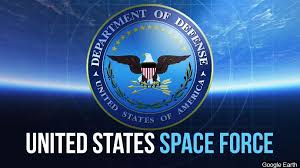The Pentagon’s Initial Plan for the Space Force

By Debbie Gregory.
The U.S. Space Force, a proposed branch of the United States Armed Forces which is intended to have control over military operations in outer space, will include uniformed service members drawn from the Air Force, Army and Navy.
According to a Department of Defense proposal, the Space Force would absorb Air Force Space Command, the Army’s 1st Space Brigade, the Navy’s Space and Naval Warfare Systems Command and Naval Satellite Operations Center.
Installations and facilities would remain within their current services until the Space Force achieves an appropriate operating capability.
The National Reconnaissance Office would not be immediately merged in, although integration could gradually occur.
The missions of the Space Force would include space situational advantage; battle management command and control of space forces; space lift and range operations; space support to nuclear command and control; missile warning; satellite communications and position, navigation and timing.
Six recommendations laid out by Deputy Defense Secretary Patrick Shanahan, the Pentagon’s point person responsible for formulating a plan to implement a Space Force, include language that:
- Guides the creation of a unified space command to be known as U.S. Space Command
- Gives direction on an legislative proposal for a Space Force
- Calls for creating a funding plan in the fiscal year 2020 budget for a Space Force
- Outlines an interagency authorities review
- Establishes joint Space Development Agency for technology procurement
- Strengthens the relationship between military space and the intelligence community
Air Force Secretary Heather Wilson, who formerly opposed separating the Air Force’s space functions from the service, now says she supports Trump’s Space Force plan.
The National Space Council is chaired by Vice President Mike Pence.







